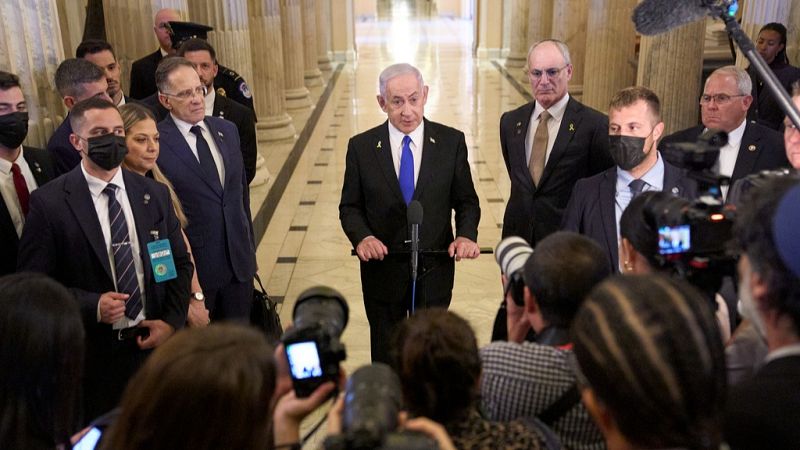Key Developments in the Israel-Gaza Conflict
Israeli Prime Minister Benjamin Netanyahu recently met with US President Donald Trump, focusing on critical issues related to the ongoing conflict in Gaza. The discussions centered around the release of Israeli hostages held in the region and the potential for a ceasefire. This meeting marked the second such encounter between the two leaders within 24 hours, highlighting the urgency with which Trump is pushing for an end to the war.
In a statement released via X by Netanyahu’s office, he emphasized that Israel’s military operations in Gaza would continue until Hamas’ military and governing capabilities were completely neutralized. According to Netanyahu, this outcome is essential to ensure that Gaza no longer poses a threat to Israel. His stance reflects a firm commitment to achieving long-term security for his country, even as the conflict has led to widespread destruction and loss of life.
Trump, who has generally supported Israel’s campaign, has also expressed concerns about the humanitarian crisis in Gaza. He described the situation as “hell” and called for an immediate halt to hostilities. White House officials are working on a proposed agreement that includes a 60-day pause in fighting, the delivery of aid into Gaza, and the release of some of the remaining 50 hostages held in the territory. Many of these hostages are believed to have perished during the conflict.
Steve Witkoff, Trump’s Middle East envoy, expressed optimism about reaching a deal. However, the path to a ceasefire remains complicated, as Hamas has stated its willingness to release all hostages in exchange for an end to the war and a full Israeli withdrawal from Gaza. Netanyahu, however, has made it clear that the conflict will only conclude if Hamas surrenders, disarms, and goes into exile—positions that Hamas has refused to accept.
The war, which began in October 2023 following a deadly attack by Hamas that killed around 1,200 people and took 251 hostages, has resulted in massive devastation in Gaza. The Israeli military’s operations have turned much of the territory into rubble, and the death toll has surpassed 57,000, according to Gaza’s health ministry.
Despite the challenges, there are signs that a ceasefire may be closer than previously thought. In the days leading up to Netanyahu’s visit, Trump had downplayed the likelihood of an agreement, stating, “I’m very optimistic — but you know, look, it changes from day to day.” However, the recent meeting could inject new momentum into the US-led ceasefire proposal, which is currently being discussed through indirect talks in Qatar.
Regional Implications and Diplomatic Efforts
Beyond the immediate focus on Gaza, Netanyahu and Trump also addressed broader regional issues, particularly concerning Iran. During their meeting, they discussed the implications of what Netanyahu referred to as their “great victory” over Tehran. This reference likely pertains to Israel’s surprise attack on Iranian military facilities on 13 June, which triggered 12 days of intense fighting.
The United States later entered the conflict by deploying bunker buster bombs against three nuclear sites in Iran, aiming to disrupt the country’s nuclear programme. These actions underscore the complex web of alliances and rivalries in the Middle East, where regional stability is often influenced by external powers.
As diplomatic efforts continue, the situation in Gaza remains a focal point of international concern. With both sides entrenched in their positions, the prospect of a lasting peace remains uncertain. However, the involvement of key global players like the United States adds a layer of complexity to the negotiations, offering both opportunities and challenges in the pursuit of a resolution.







